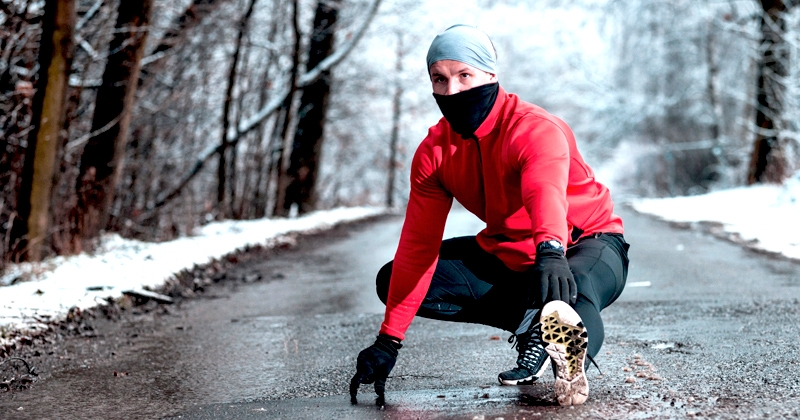Strengthening your ligaments and muscles is an important part of winter training. Circular exercises can be performed on the street, while static exercises can be performed at home, including them in the lesson plan.
Frequency of circular sets-at least once a week. The approximate scheme of classes consists of:
- pull-ups and push-ups;
- sets for the abdominal and back muscles;
- exercises for the calf muscles.
For strength endurance training, it is better to choose different variations of racks (with an emphasis on the elbows) and a shuttle. Increase the number of laps as you progress. Stretching is necessary not only before training, but also after it-do exercises in a warm room so as not to get injured.
Alternative to running in winter
You can diversify your winter training sessions by swimming on a season ticket, cycling and playing football on a high-quality surface in the "Grand Prix" - they provide a similar load. Cross-country skis perfectly replace restorative, developmental cross-country and fartlek-choose them if you want to change the type of sports activity.
Where to train?
The ideal place for winter training is where you can immediately warm up after the end of classes. You can't stop in the Cold-be sure to move, even if you are resting between sets.
Best run finish fast walking and dynamic warm-up.
How to dress in winter
The comfort of training directly depends on the clothes in which you will work out. Focus on the type of coverage when choosing shoes, and on the weather conditions, the intensity of classes when buying clothes.
Running shoes
Buy three pairs of running shoes:
- for treadmill activities;
- for training on asphalt;
- for running in the snow.
Shoes should provide a good grip on the surface, and high-quality cushioning will not be superfluous.
Clothing
Layering is the main principle when choosing clothes for winter group training:
- first layer (removes sweat) thermal underwear or synthetic T-shirt;
- second (warming) running shirt, fleece jacket, or sweater;
- third (protects from wind and bad weather) - windbreaker.
Don't forget your hat, scarf, and gloves.
Accessories
A heart rate monitor or fitness tracker will help you track your heart rate zone.choose models that do not turn off and work stably at low temperatures. A flashlight won't hurt either, especially if you like to run in the morning or evening-with a short day of light, it gets dark early.



